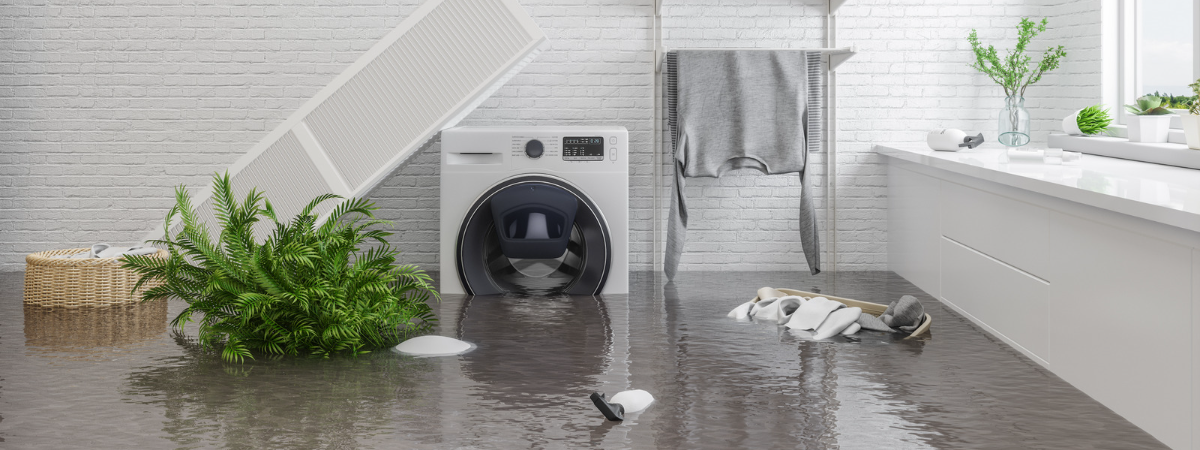What you Risk if Your Home is Underinsured

About eight in 10 Australian homes are underinsured, according to (ASIC) Australian Securities and Investments Commission. As well, 11% of householders have no building insurance, and 23% have neither building nor contents insurance.
If you're in any of those categories, here's an update on what risks you face and how you can better protect what's usually your key asset.
What is underinsurance?
Underinsuring your home means you have 90% or less coverage.
When you originally took out a home insurance policy, the 'sum insured' might have been based on your purchase price. But a lot can change over time. Have you factored in renovations or other improvements that can boost your property's value? Escalating costs and shrinking availability of builders and building materials also nudge the value higher.
Your policy might have given you the option for 'full building replacement', wherein the most paid for loss or damage to the building for any one incident is the assessed quote to either repair or rebuild the building. That happens if you're claiming for an insured event and all of your details were accurate when you initially applied for the policy.
Here are the key differences:
-
The most that will be paid for loss or damage to the building for any one incident is the sum insured shown on your certificate of insurance
-
Full building replacement: your insurer comes up with this figure.
However, most insurance policies use 'sum insured'.
What are the risks of underinsurance?
Even if an insurer regards your property as underinsured, the most the insurer will pay is the sum insured.
So, if you're underinsured and need to make a claim that exceeds the sum insured, you'll be out of pocket. That means you'll have to meet the shortfall to get your home back to its condition before that event. Researchers say insurers "excessive use of rapid cash settlement" to policyholders who've experienced a disaster has a downside. Consumers may be shocked to find a widening gap between that agreed payout and rising building and materials costs by the time they get organised to start the rebuild.
As of January 1st 2022, insurers must now provide a cash settlement fact sheet where cash payment is not the only option available for the settlement of a claim. The customer must be given a fact sheet which outlines the options available and a breakdown of the proposed cash payment.
If you can't access funds to bridge the shortfall, you may not be able to repair your home, so it will lose value. Even worse, if you can't salvage much from your destroyed home and the partial insurance payout doesn't go far, you may not even be able to rebuild a home.
The risks are high in our country. As an Australian resident, you have five times the risk of a natural disaster or extreme event displacing you than people living in Europe, says the Insurance Council of Australia.
Despite this, we can do more to prepare. Just three cents are spent on disaster prevention for each 97 cents spent on clean-up and recovery, the Productivity Commission has found. And, few homeowners understand how insurers factor in the 'bush fire attack level', or BAL, to arrive at the policy premium.
How to ensure you're adequately insured
Go better than a 'back of the envelope' calculation for the cost of replacing your home should a disaster happen. Online calculators can give you a rough estimate and remind you to consider costs, such as:
-
Demolition, removing debris
-
Professionals such as architects, engineers, etc
-
Local council approval (but you'll need to inquire about changed or new regulations that impact on rebuilding costs, too)
-
Labour
-
Building materials.
Try this calculator for building costs and this MoneySmart checklist for your contents. For a more precise figure, seek out a quantity surveyor.
We can help
We're here to take the stress out of ensuring your home is protected, and should a disaster strike, help you claim on your insurance policy. We'll guide you on reviewing your home building and contents insurance regularly because it is a key safety net.
We offer clear insights into the fine print of your policy. For example, most home building insurance policies will cover you for:
-
Explosions and fire
-
Burst pipes
-
Storm, rainwater and lighting strikes
-
Earthquakes and tsunamis
-
Theft, vandalism
-
Falling objects including trees.
We can also guide you on a policy that best meets your budget and needs. It might mean you don't go for optional extras, such as accidental damage. As well, particular insurers may offer discounts for homeowners who can demonstrate considerable disaster preparedness.
Any financial product advice in this content is provided by cgib AFSL No. 231183. This material is general in nature and has been prepared without taking into account your objectives, financial situation or needs. Accordingly, before acting on it, you should consider its appropriateness to your circumstances. cgib respects your online time and privacy.






